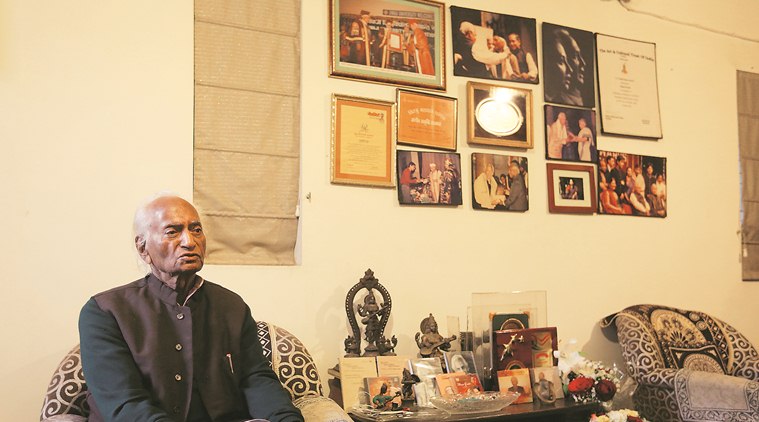Written by Suanshu Khurana |Updated: March 14, 2019 8:30:15 am
Pt Laxman Krishnarao Pandit on the concept of fame, why it eludes some very talented artistes and practising till his last breath
Pt Laxman Krishnarao Pandit, the scion of the famed Gwalior gharana, who turned 85 last week. He was born in 1938 into a well-known family of musicians.

A couple of wilted gerbera and rose bunches are stowed near a small table, choc-a-bloc with idols of Goddess Saraswati, some old framed photographs in a small apartment located in Delhi’s Munirka. The flowers mark Pt Laxman Krishnarao Pandit’s 85th birthday — a milestone in the life of a significant Hindustani classical vocalist who has zealously represented the Gwalior gharana — the oldest gharana of khayal gayaki and the fountainhead of so many other gharanas for more than half a century. “It has been an enriching journey. Years of riyaaz and creating music don’t seem enough; I need to learn more,” says Pandit, sitting next to framed citations of the Sangeet Natak Akademi Award and Sangeet Kalaratna, among others.
“I feel happy I could learn music under the aegis of Gwalior gharana; Mian Tansen’s style was rooted in the same gayaki,” says Pandit, a Hindustani classical vocalist whose name may not be a regular in the concert scene, but whose voice remains significant with private collectors and connoisseurs. Not just because of its timbre or the concept of Ashtaang gayaki (a systematic eight-fold elaboration of the raga) of the Gwalior gharana or delivering the classical tappa, one of the toughest styles in classical music, or his unparallel khayal gayaki, but also because he remains one of the oldest musicians to delineate ragas in the format of the Gwalior gharana.
“You need tricks to earn fame. Many artistes have used a lot of that in the past. It isn’t something I am comfortable with,” says Pandit, a day before catching the train to Patiala for a concert at the local university. His daughter and Hindustani classical vocalist, Meeta Pandit, tells us how he’d been insisting on going alone. “I’ve been asking him to take a student along,” she says. At a time when all senior classical musicians travel with an entourage of musicians, it’s heartwarming to come across an old-fashioned musician, for whom a certain kind of “artiste lifestyle” does not matter. But there is no disenchantment. “If you don’t think about other things, it helps you concentrate on your music,” says Pandit.
Pandit was born in 1938 into a well-known family of musicians. His father was Pt Krishnarao Shankar Pandit, who founded the Shankar Gandharva Mahavidyalaya in Gwalior in 1914. Pt Krishnarao was also responsible for developing an easy and independent notation system and authored numerous books and essays to make music education easier and accessible for students. His grandfather, Pt Shankarrao Pandit, was a direct disciple of the founders of the Gwalior gharana — Ustad Haddu, Nathu and Nissar Hussain Khan. “Nissar Khan lived in our house and taught. Since it was a Brahminical household, and non-vegetarian food was not acceptable, he turned vegetarian. In fact, they called him Nissar Bhatt back then,” says Pandit with a laugh. “I learned music at a time when it was the only thing we did. We didn’t go out. We just sat and did sadhana,” he adds.






















No hay comentarios:
Publicar un comentario